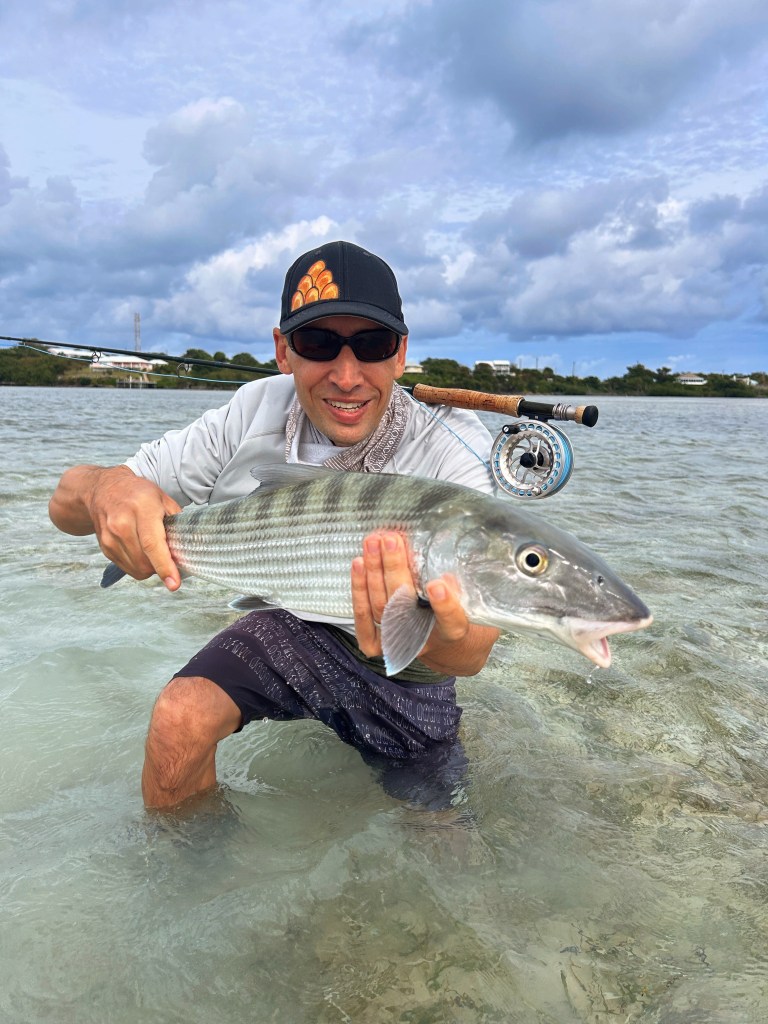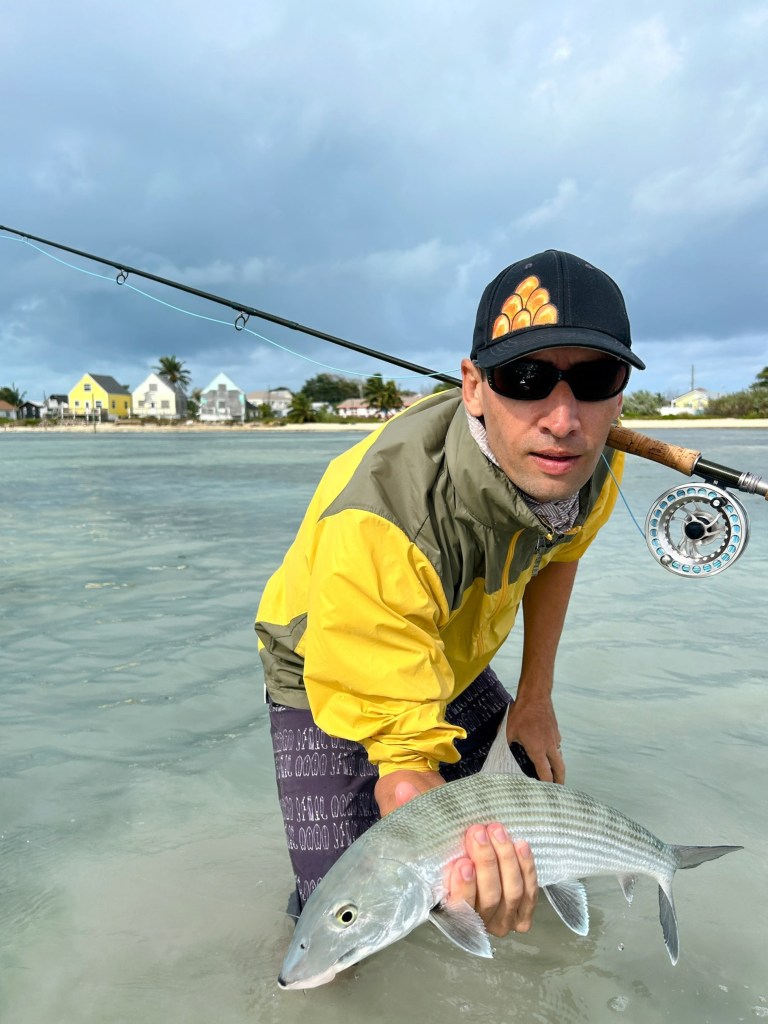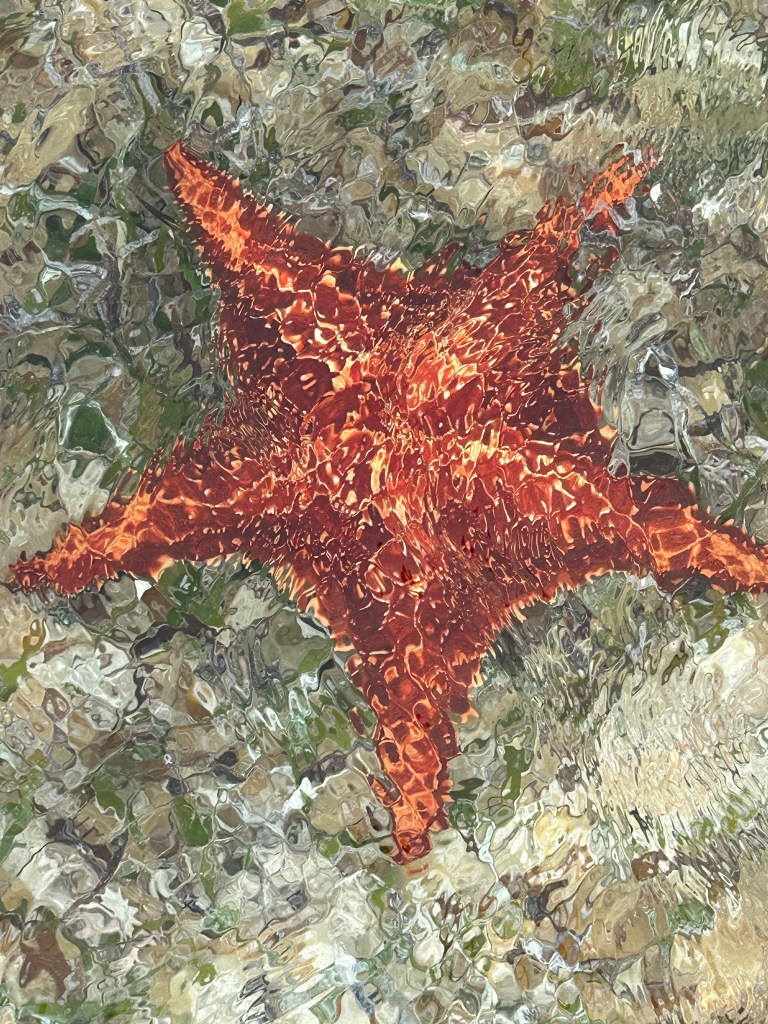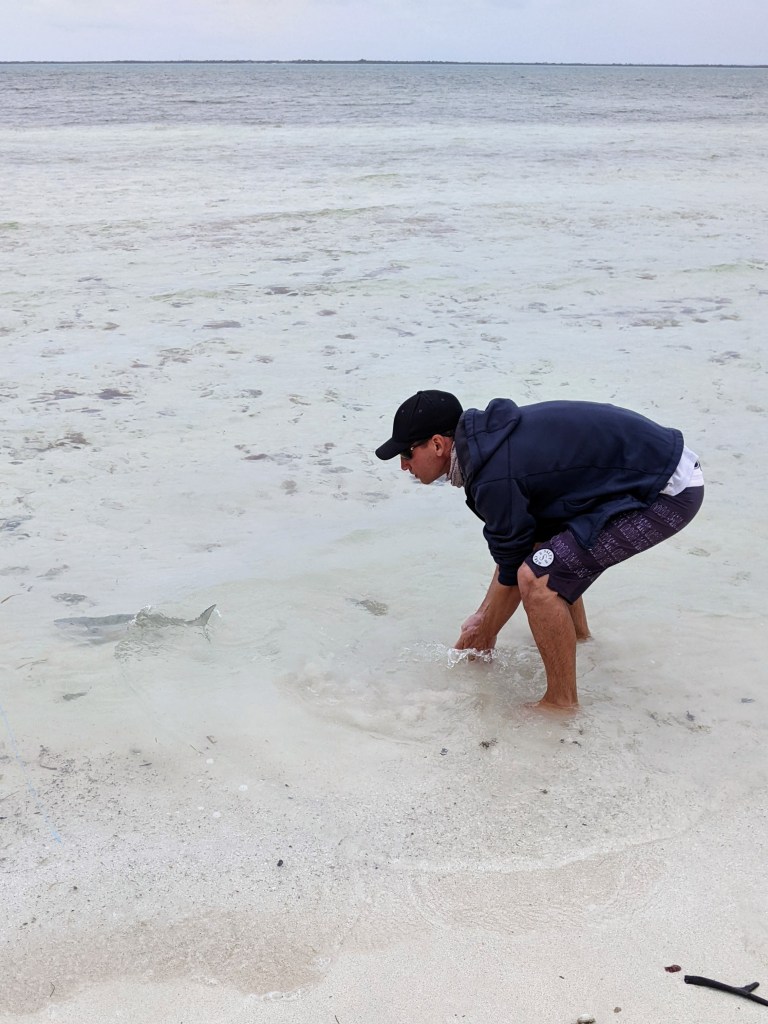After a warm-up day of fishing on Great Abaco Island we headed to Green Turtle Cay for some real Bahamas bonefishing…

Part 2: Green Turtle Cay
A normal day in Hawaii means 15 mph trade winds. Bad wind means sustained winds of 25-30 mph, the kind of wind with gusts that makes you stop walking and brace yourself. (And yes, one can still catch bonefish in those conditions.) The wind on Green Turtle Cay was blowing pretty consistently at about 15 mph and everyone seemed to be complaining about it. While it did require a long sleeved shirt or a light jacket most of the time, it wasn’t too unpleasant, and it seemed to keep the bugs down, which I understand can be a big nuisance in The Bahamas. The general trend with the bonefishing seemed to be that we didn’t see great numbers of fish but that patience was consistently rewarded and the fish seemed more than happy to eat. The fish were also quite a bit larger than I expected. In fact, they seemed to get bigger every day we were there.

After checking in to our room and getting our wheels, we set about exploring the island. I had noted several areas on the satellite map where I suspected we might find bonefish, and I was not disappointed. In fact, we even saw them in spots I did not think would be productive. It was fun to bump down the back roads and check out all the shoreline access we could find but as we kept spotting feeding bonefish I began to regret leaving my rod in our room. In fact, my advice for any future DIY bonefishers in The Bahamas is to always have a rod with you!
On Christmas Eve we met up with local guide Rick Sawyer. He was not pleased with the windy weather and it was all we could do to talk him into taking money for a half day charter. We spent the first half of the morning drifting one of the flats on Green Turtle Cay itself. We saw a few fish here and there but didn’t find any action until Captain Rick spotted a huge mud cloud where he said there were probably several hundred bonefish feeding their way down the flat. I have seen groups of perhaps 20 to 30 bonefish on the flats in Hawaii, but they are often just cruising in one area, waiting for the tide to push in, or sometimes getting ready to spawn, but this was something altogether different, and it was a sight to behold! We drifted past the group and I made some blind casts into the mud cloud with no luck. Captain Rick motored back up the flat for another pass and had me switch my fly. Still nothing. We tried again, and this time the new fly, a heavier brown shrimp, did the job and I landed a fine little fish. Shortly after that the swarm just disappeared off the edge of the flat with the falling tide. We checked some other spots, including a few incredible looking flats on nearby cays, but there just weren’t anymore bonefish to be found that morning.

On Christmas Morning we parked our golf cart in New Plymouth and walked about a mile down the road where we cut through the pines and cypress to the same flat we had fished the day before with Captain Rick. There was one other fly fisherman out so we gave him a wide berth and made our way along the beach until we rounded a gentle corner. The inside here was all turtle grass and mangroves, but the soft bottom made wading tough so we walked out toward the edge of the flat where the bottom was light colored and firmer. We did not see any fish for a long while, but it was quiet and peaceful and there was a bit of sunshine now and again to warm us against the wind. Suddenly I spotted a tail heading our direction, then one, then two more. The fish were in very shallow water and feeding happily so their dorsal fins and tails frequently cut the surface and allowed me to track their progress. I made a back-hand cast towards shore and slightly upwind, and waited until the lead fish got close. I gave the fly a couple of little twitches and the fish rushed over. It was my favorite kind of take. At about 25 feet I could see the fish clearly as it tipped down and buried its nose in the mud right where my fly was waiting. Its body gave the telltale wiggle that bones make when they eat, and just like that I was playing a Christmas bonefish. It took quite a while to land and was surprisingly fat and heavy.


We had almost reached New Plymouth where our golf cart was waiting so we angled towards shore. The tide was dead low but there was a series of large sandy pockets deep enough to hold fish. Halfway in I spotted a mud cloud on the far side of one of these holes. It looked just like the one we had fished the day before but in miniature. I tried wading closer but the ground became alarmingly soft and I thought it might swallow up one of my wading boots. The wind had eased off a little bit so I stopped where I was and stripped off a bunch of line to make a long blind cast. On about the third try I got a solid bite and landed a second Christmas bone!


I was quite satisfied as we made our way back to our waiting golf cart and puttered back across the cay to warm up in our room. After lunch however we found we really had nothing to do until dinner so we decided to walk down to the sandy beach beside the resort. It didn’t look like prime bonefish habitat but, having learned my lesson a few days prior, I brought my rod along just in case. The wind had picked back up and was whipping sand along most of the beach so we walked to the very farthest end which was sheltered by a low peninsula. Just as we got the beach towel out and were settling down I spotted a shadow gliding through the shallows about 30 feet from shore. I snatched my rod and sprinted down the beach after it. I made a single cast and hooked my third Christmas bonefish – without even getting my feet wet.


It was another good sized fish, and it was the only fish I saw at this particular beach during our stay. This was also reminiscent of wintertime in Hawaii when we see fewer fish overall, but more large fish feeding alone.
Next time in part 3: did we catch anything besides bonefish?